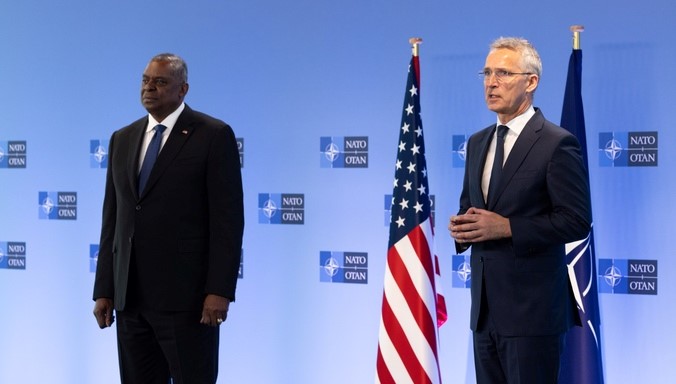For decades, since the fall of the Soviet Union, there were questions about the need for NATO. Indeed, even some member nations appeared to lose faith in the necessity of its existence. President Trump famously chided Germany and other nations for their failure to contribute to the alliance’s upkeep.
That situation has dramatically altered. Russia’s renewed aggressiveness and the rise of China as an existential threat has essentially renewed and even expanded NATO’s mission.
A NATO release detailed the new thinking.
Russia’s invasion of Ukraine dominated the NATO defense ministers’ meeting in Brussels.
Not since the fall of the Soviet Union in 1991 has there been as serious a threat as Russia’s unprovoked invasion of neighboring Ukraine, NATO Secretary General Jens Stoltenberg said yesterday at a press conference. This drastically changed the security environment in Europe and the globe, he said.
“We must set out NATO’s response for the longer term,” he said. “At the summit, we will take decisions to make NATO even stronger and more agile in a world that is more dangerous and more competitive. I am confident that the Madrid Summit will be a transformative summit.”
The secretary general said there are a number of areas where the heads of state and government will make decisions in Madrid. He expects the 30 NATO nations to significantly beef up deterrence and defense.
“We will also decide on a new NATO strategic concept, setting out our position on Russia, on emerging challenges, and — for the first time — on China,” he said. “And in this context, I welcome that the leaders of our Asia-Pacific partners will take part in our summit for the first time.”
The Indo-Pacific nations that will attend the summit are Australia, Japan, New Zealand and South Korea.
The leaders will also look at better burden-sharing and resourcing for the alliance.
Finally, they’ll discuss the historic applications for NATO membership by Finland and Sweden, he said.
The defense ministers looked at all these areas and made progress, the secretary general said.
The ministers met with Ukrainian Defense Minister Oleksii Reznikov and got an update on the situation in the embattled country. “We addressed the imperative need for our continued support, as Russia conducts a relentless war of attrition against Ukraine,” Stoltenberg said. “NATO allies and partners have been providing Ukraine unprecedented support, so that it can defend itself against Moscow’s aggression.”
Many NATO countries — including the United States — have announced additional assistance, including much needed heavy weapons and long-range systems.
But as Russian President Vladimir Putin’s war continues, the ministers discussed plans to support Ukraine for the long haul. “We are putting together a NATO comprehensive assistance package for Ukraine, helping Ukraine improve interoperability with NATO, transitioning from Soviet-era to modern NATO equipment, and further strengthening security institutions,” Stoltenberg said.
“Russia’s aggression is a game-changer,” he said. “So, NATO must maintain credible deterrence and strong defense.”
The defense ministers addressed the scale and design of our future posture — the so-called footprint of NATO forces in Europe. They also discussed how the alliance can work in all domains of warfare: land, sea, air, cyberspace and space.
On land, the idea is “more NATO forward-deployed combat formations to strengthen our battlegroups in the eastern part of our alliance,” Stoltenberg said. He said there will be more air, sea and cyber defenses, as well as pre-positioned equipment and weapon stockpiles.
The strategy calls for a new force model, “with more forces at higher readiness and specific forces pre-assigned to the defense of specific allies to enable much faster reinforcement,” he said. “A number of allies have committed to contribute to our stronger presence in the eastern part of our alliance.
